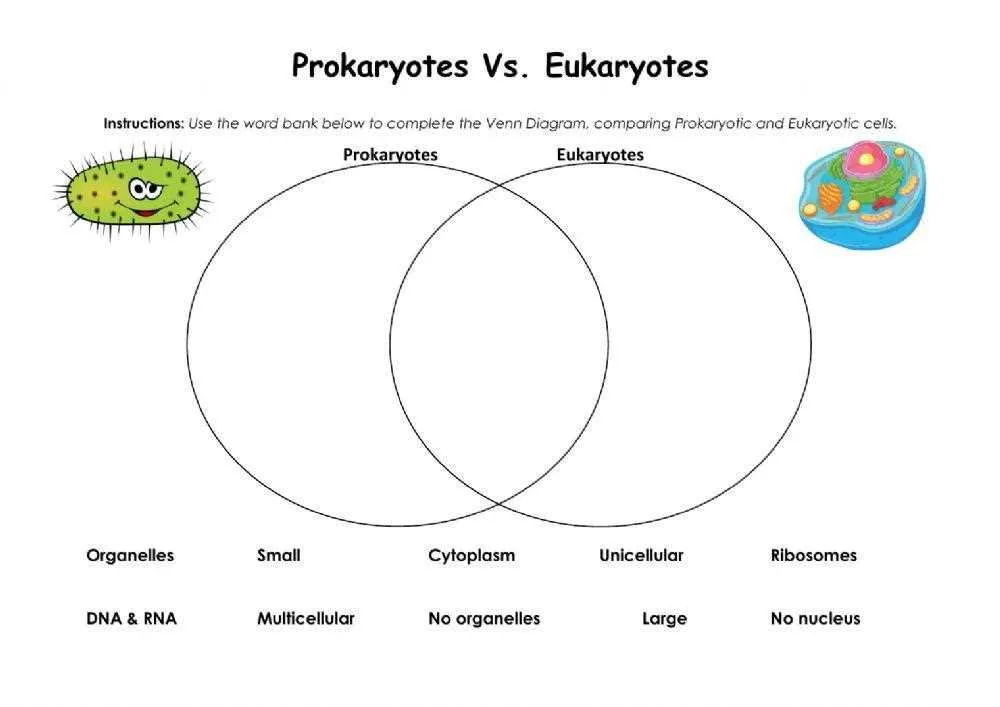
To accurately differentiate unicellular life forms lacking a nucleus from those possessing complex cellular compartments, focus on structural and functional traits. Unicellular entities without membrane-bound organelles typically exhibit a simple cell architecture with circular DNA localized in the nucleoid region, while organisms with compartmentalized cells contain linear chromosomes enclosed within a nucleus.
Genetic material organization, presence of membrane-bound structures, and modes of reproduction provide essential criteria for classification. Entities without true nuclei reproduce primarily by binary fission, whereas those with organized nuclei utilize mitosis or meiosis for cellular division, reflecting fundamental biological distinctions.
Metabolic pathways and cellular processes reveal both commonalities and divergences between these two biological categories. While both types may carry out transcription and translation, the location and regulation mechanisms differ significantly, impacting gene expression and adaptation strategies in various environments.
Distinct Cellular Structures Unique to Prokaryotic and Eukaryotic Cells
Bacterial and archaeal cells feature a nucleoid region, an irregularly shaped area housing circular DNA without a surrounding membrane. This contrasts with organisms of the domain Eukarya, which encapsulate genetic material within a membrane-bound nucleus.
Cell walls in simpler cells are composed primarily of peptidoglycan (in bacteria) or pseudopeptidoglycan (in some archaea), providing rigidity and shape. More complex cells, when possessing cell walls, utilize cellulose (plants) or chitin (fungi) instead.
Membrane-bound organelles such as mitochondria, chloroplasts, the endoplasmic reticulum, and Golgi apparatus are hallmark features exclusive to eukaryotic organisms, enabling compartmentalized biochemical processes. In contrast, simpler cells lack these distinct compartments.
Ribosomes in simpler cells are 70S in size, composed of 50S and 30S subunits, whereas those in complex cells are larger 80S particles, consisting of 60S and 40S subunits.
Flagella differ structurally: simpler cells have a rigid, rotary flagellum made from flagellin, enabling motility via rotation. In contrast, complex cells exhibit a whip-like, microtubule-based flagellum with a 9+2 arrangement, producing movement by bending.
Plasmids–small, circular DNA molecules independent of chromosomal DNA–are common in simpler cells but rare in more complex counterparts.
Shared genetic and metabolic features illustrated by the overlap
Focus on the presence of conserved genetic sequences such as ribosomal RNA genes, which are fundamental to protein synthesis across both cell types. Both possess DNA organized into chromosomes, utilize similar mechanisms for transcription and translation, and share homologous enzymes like DNA polymerases and RNA polymerases.
Metabolically, both groups rely on ATP as the primary energy currency and engage in glycolysis to break down glucose. Essential pathways including the citric acid cycle and oxidative phosphorylation operate in mitochondria or analogous structures, ensuring efficient energy production. Key metabolic cofactors like NADH and FADH2 function universally in redox reactions.
Recommend leveraging these commonalities for comparative genomic studies or biotechnological applications such as enzyme engineering, where shared molecular machinery enables cross-domain functional transfer. Investigate the conserved regulatory elements in gene expression control to uncover evolutionary links and optimize synthetic biology constructs.
Practical Implications of Cellular Differences and Similarities in Biotechnology
Utilize bacterial systems for rapid protein production due to their simple cellular architecture and fast replication rates, enabling cost-effective synthesis of enzymes and pharmaceuticals. However, apply yeast or mammalian cells when post-translational modifications are essential, as their complex internal structures support proper folding and glycosylation patterns.
Leverage genetic manipulation techniques in simpler organisms for plasmid-based cloning and expression of recombinant DNA, benefiting from fewer regulatory sequences and reduced epigenetic interference. For advanced gene editing involving complex pathways or multicellular interactions, select organisms with compartmentalized organelles to ensure accurate functional integration.
Choose microbial models for metabolic engineering targeting biofuel generation, as their streamlined metabolism allows easier pathway optimization. Conversely, employ cell lines with membrane-bound organelles to produce biopharmaceuticals requiring intricate processing, such as monoclonal antibodies.
Capitalize on the rapid growth and straightforward culture conditions of single-celled microorganisms for high-throughput screening and industrial fermentation processes. For studies involving intracellular trafficking or signal transduction, select organisms with membrane-bound compartments that mimic higher-order cellular environments.
Design biosensors utilizing microbial chassis with simple regulatory networks for quick, reliable responses to environmental stimuli. Meanwhile, apply eukaryotic-like cells to develop systems requiring complex regulation and multi-step enzymatic cascades.